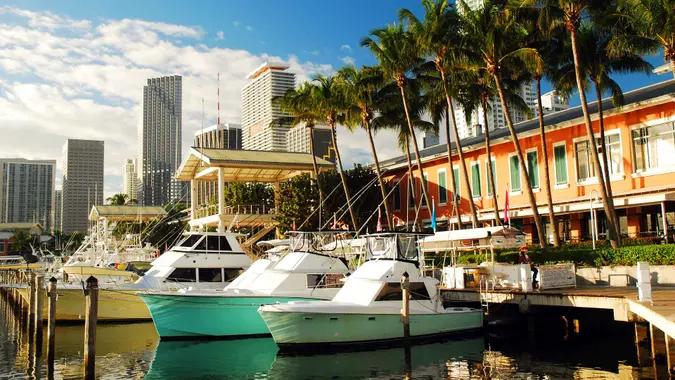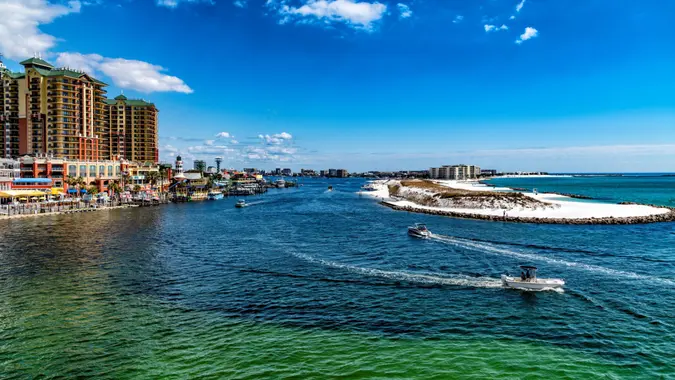Oil Demand Reaches 3-Year High, As Prices Inch Toward $90 a Barrel and Inflation Climbs

Commitment to Our Readers
GOBankingRates' editorial team is committed to bringing you unbiased reviews and information. We use data-driven methodologies to evaluate financial products and services - our reviews and ratings are not influenced by advertisers. You can read more about our editorial guidelines and our products and services review methodology.

20 Years
Helping You Live Richer

Reviewed
by Experts

Trusted by
Millions of Readers
Oil prices have reached their highest level in three years, reaching $80 per barrel, as demand remains strong and supply dwindles. Rising oil prices suggest that global inflation will be longer lasting than anticipated, forcing central banks to take action.
From Coffee to Lunchables: How Working Remotely Is Impacting Inflation
Watch Out: COVID-19 and Labor Shortage Expected To Push Supply Chain Issues Into 2022
Goldman Sachs adjusted its Brent oil price to $90 a barrel by the end of the year, reported Reuters, saying “the current global oil supply-demand deficit is larger than we expected, with the recovery in global demand from the Delta impact even faster than our above-consensus forecast”.
Global oil demand is expected to pass pre-pandemic levels early next year, OPEC says, raising its forecast for 2022 by slightly under a million barrels a day to 100.8 million barrels a day, higher than 2019’s demand level of 100.3 million barrels, reports the Wall Street Journal.
Related: Walmart Is Hiring 20,000 Workers to Battle Holiday Supply Chain Issues
Oil prices and inflation levels are typically connected in a cause-and-effect type of relationship. As oil prices rise, inflation follows. Similarly, as oil prices fall, inflationary pressures begin to ease. With climbing oil prices, the Federal Reserve is now indicating that inflation may be sticking around for a little while longer, despite previously arguing that rising inflation would be short-lived.
“Inflation is elevated and will likely remain so in coming months before moderating,” Fed Chairman Jerome Powell said at the bank’s most recent strategy session, MarketWatch reported.
The Fed raised its estimate of average inflation this year to 4.2% from 3.4% last Wednesday. Earlier this year, the Fed was expecting inflation to average just 1.8% in 2021. The Consumer Price Index shows average inflation rates for the year to be even higher, at 5.3%.
See: Chip Shortage Leads to Projected $210 Billion Loss for Auto Industry in 2021Find: Costco, FedEx, Nike Among Companies Expecting Higher Inflation Ahead of Holidays
Oil futures went up by $9 in September, Reuters added. Brent crude rose to $79.25 a barrel on Monday while U.S. oil futures increased to above $74.95. The central bank predicts inflation to drop back down to 2.2% in 2022.
More From GOBankingRates
- Fourth Stimulus Checks Are Coming From These States — Is Yours on the List?
- The 8 Best Deals From Costco’s September Coupon Book
- What Is the Next Big Cryptocurrency To Explode in 2021?
- When Social Security Runs Out: What the Program Will Look Like in 2035
Last updated: September 27, 2021
 Written by
Written by  Edited by
Edited by 

























